Scar Massage Therapy in Bristol
FeelGood Fitness offers scar massage therapy using the RESTORE method which was developed by the UK’s leading scar therapy teacher and Harley Street scar specialist, Emma Holly. This method of non-invasive physical therapy was developed to treat scar tissue, fibrosis and adhesions after surgery or injury using specialist scar massage and fascial release, therapy tools and self- care advice to promote healthy scar tissue recovery.
RESTORE scar therapy has been developed to:
- stimulate changes in scars, both on the skin surface, and any adhesions or fibrosis in the underlying tissue
- promote functional and cosmetic improvements after surgery or injury
- reduce common symptoms, such as pain and sensitivity
- assess and treat any associated functional changes
- support emotional wellbeing after surgery or trauma
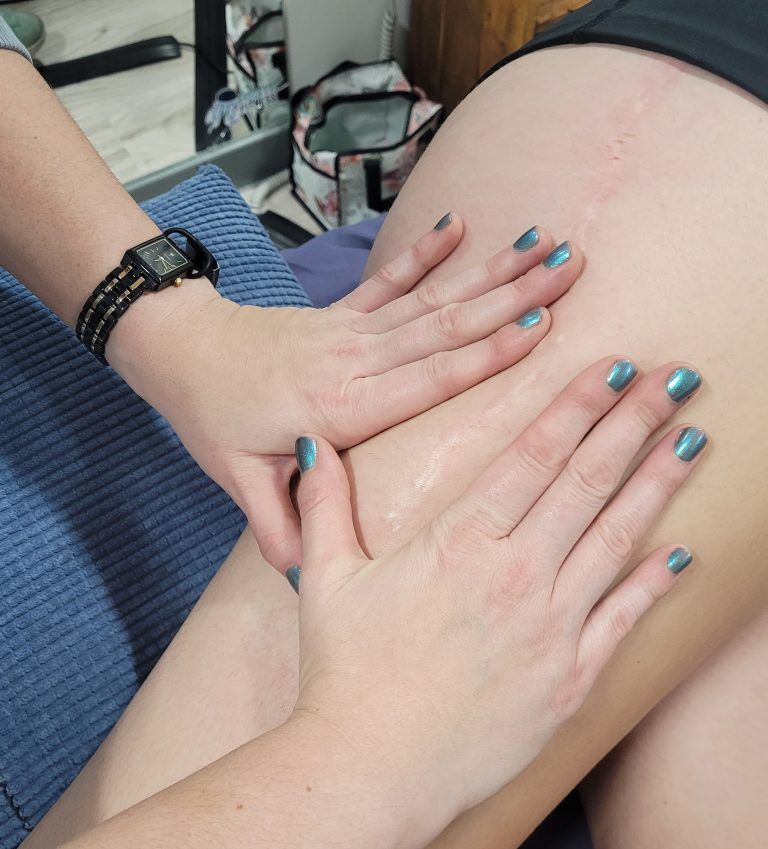
How can scar therapy help me?
There are many benefits to seeing a therapist trained in RESTORE scar therapy. If you have recently had a surgery or injury, your therapist can treat your scar to help stimulate healing and soften fibrosis as the scar matures, and suggest self-care for you to continue at home.
We can’t make a scar disappear, but RESTORE scar therapy treatment usually generates improvements to symptoms such as pain or sensitivity. Textural changes to the suppleness of the scar and surrounding tissue often occur.
What to expect during and after treatment
Scar therapy has been developed to stimulate the body and generate changes in your scar. During your appointment, your therapist may also work on muscles and fascia around the scar. This will usually leave you feeling relaxed and give a sensation of lightness and mobility at the end of the appointment.
You may immediately notice changes in your scar, or you may notice changes in the following days after treatment. Some people require a few treatments before significant changes are observed.
As nerves repair, some people experience a sharp pain sensation which lasts for a moment then disappears. This may be experienced in the days or weeks after treatment. This is normal and should not be a cause for concern.
You may feel tired or emotional after scar therapy. Listen to your body and rest as needed. Gentle and compassionate touch on your scar may generate emotional release. Ask for help if you are struggling with your mental health.
Your therapist may recommend self-scar massage and products to help hydrate and protect your scar. These are very helpful to improve the cosmetic and functional results as part of a scar therapy treatment programme.
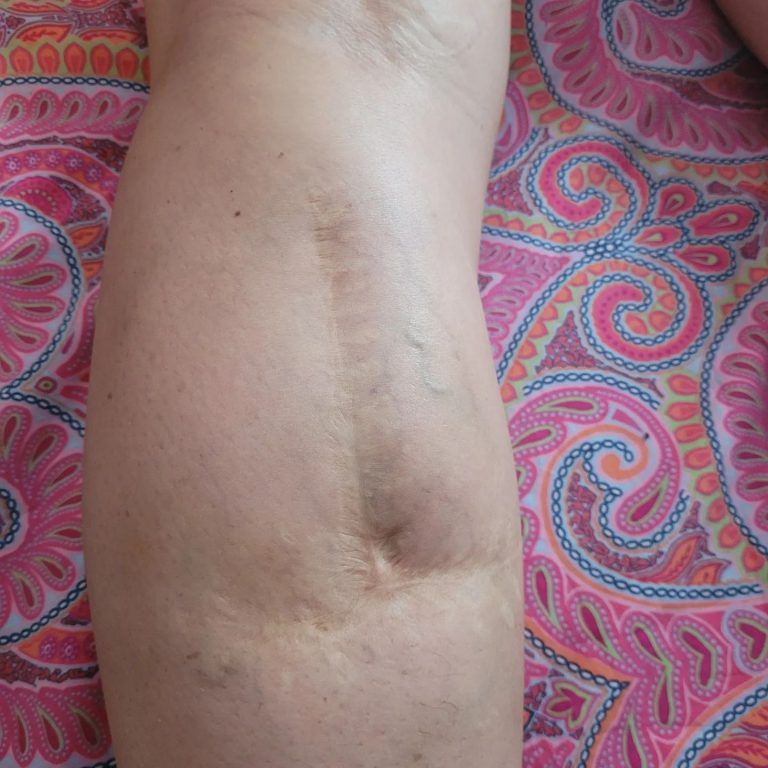
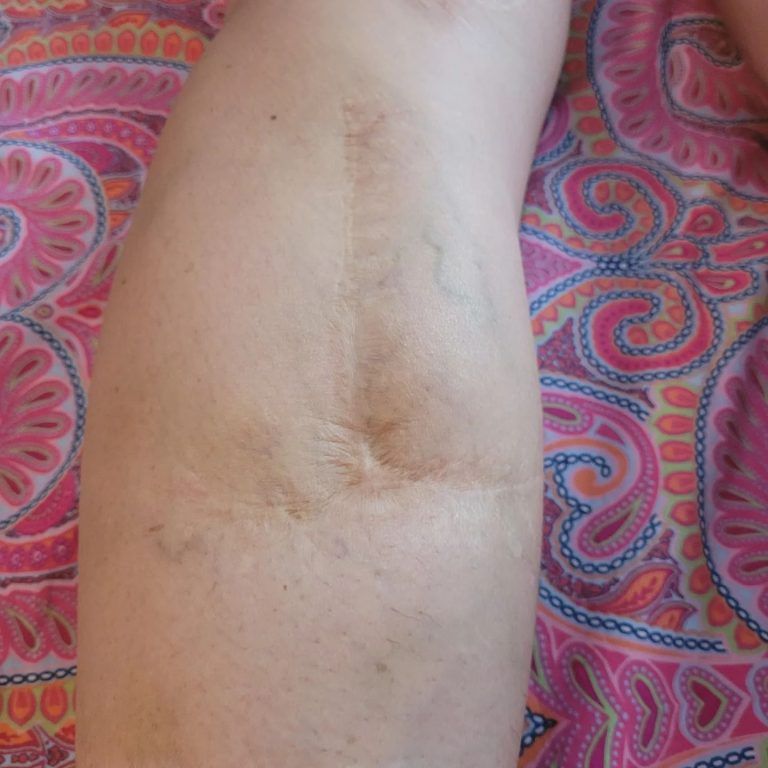
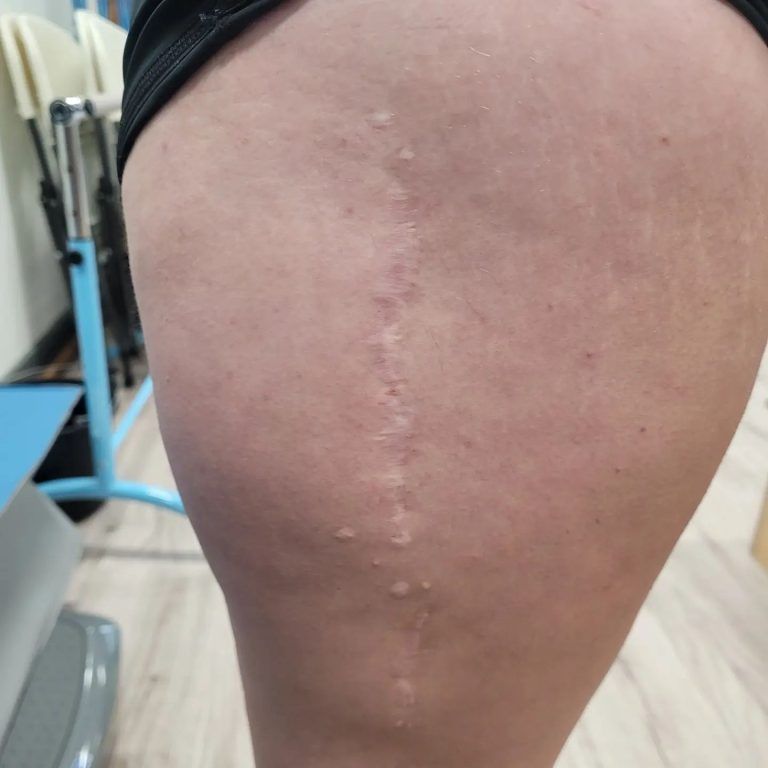
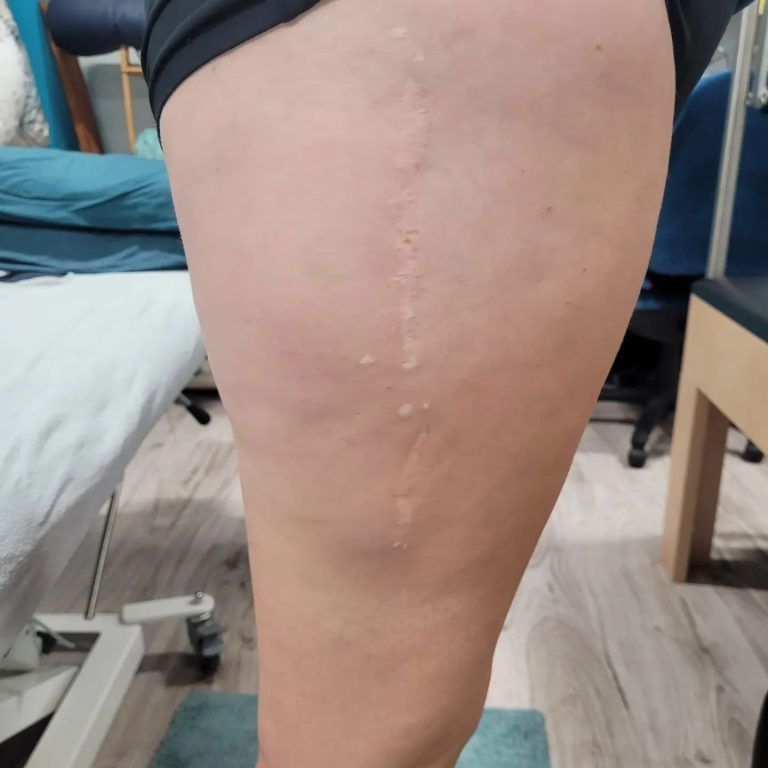
How to book
Prices and the number of treatments recommended will depend on your scar. Contact Sian for more information or to book.

Scars don't have to big! Key hole and micro surgeries can still cause discomfort or problems. If you have ANY type of scar that feels tights or restrictive, or you get pain close to the site, scar massage therapy might help.
Pay a deposit
Frequently Asked Questions
You can dissolve adhesions without surgery using scar massage therapy. Although we can’t make adhesions disappear completely, scar massage therapy can help to break them down and soften them so the surrounding tissues can move easier and cause less restriction in the scar and surrounding areas. Early use of scar massage can help to stop adhesions from forming or getting worse. What’s more this a very gentle and effective method you can use at home.
Yes, scar massage therapy can help older scars. The body is constantly renewing cells so even an old scar can still improve when given the right stimulation.
Treatment from your therapist using the RESTORE method should always stay within your comfort levels. We do not need to hurt you to generate improvements to your scar and any underlying adhesions or fibrosis.
How many treatments you may require will depend on your scar and symptoms you are experiencing. Your therapist will discuss this with you.
Follow your therapist’s advice about returning to exercise. They may recommend you avoid strenuous activity for 24-48 hours after treatment.
Scar tissue pain in your abdomen can present itself as a pull, tightness or a deep stretch. Sometimes if there is a lot of scar tissue, then this can lead to digestive problems, lower back pain and even rib and breathing restrictions. Pain or discomfort can sometimes feel like a deep pull or that there is a lack of movement around the area – sometimes feeling as if the area might tear.
Scar massage aims to release and soften any adhesions or restrictions around the scar itself and the surrounding tissues. If scars have healed lumpy, raised, are still red or there is a sense of pain or pulling, then treatment may help to relieve some of these symptoms, if not improve them.
For very new scars, therapy can help with the healing process, helping to promote new cell development, which in turn helps to create new and stronger new tissues.
Internal scar tissue can be a little more tricky to get rid of. However sometimes scar massage therapy can help in releasing any adhesions and restriction that may be connected to the top layers of fascia and skin. By allowing these tissues to move more freely and fluidly, this can help with any internal scaring.
Surgery and invasive injuries can leave internal scar tissues and adhesions. These can be a little tricky to treat as we can’t see them. However, sometimes restrictions can be seen through the movement of the skin, and so we can treat the more superficial layers of scars, including the fascia. This can help to create movement between the different layers of the skin, which may help with any internal scar tissue.
Scar tissue massage aims to release and soften any adhesions or restrictions around the scar itself and the surrounding tissues. If scars have healed lumpy, raised, are still red or there is a sense of pain or pulling, then treatment may help to relieve some of these symptoms, if not improve them.
For very new scars, therapy can help with the healing process, helping to promote new cell development, which in turn helps to create new and stronger new tissues.
Yes, scar tissue can cause pain! If the scaring has healed poorly or stitches or surrounding areas are ‘tight’ this can cause pain around the area on or over the scar. It’s not uncommon for areas around the scar to feel different to neighbouring areas, sometimes numbness or a loss of sensation including lack of being able to feel temperature changes. Other sensations can be an increased sensitivity, especially to touch, feeling of the scar being pulled or that it is going to tear. Deep stretching can also be felt and is not uncommon in any abdominal surgery.
Although we can’t break down scar tissue, we can influence how it heals, moves and sometimes looks. After surgery or an injury (mostly if it’s more than skin deep!) its important to take on adequate hydration and protein as this assists in the healing of damaged cells, collagen and tissues. After the wound has fully healed (all the scabs have gone) then massage is highly recommended. This is because it helps to encourage cell and tissue growth, it also helps to encourage oxygen and blood flow to the area. For extensive scarring including bad burns, then the use of silicon patches might be advisable to protect the area and encourage cell regrowth further.
Scar tissue massage should be very gentle and shouldn’t cause pain, restriction or cause the area to go very red. Gentle circles around and over the scar, gentle stroking type movements and even some light tapping can help in the healing of scar tissue. This can be done with or without an oil or a lotion. The main thing to remember is that the scar should be fully healed with no scabs and the health provider should give the all clear for scar treatment before 8 weeks.

